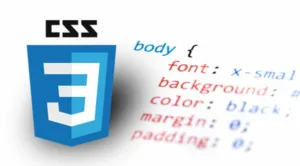OK so I have 7 sections, first 4 sections are CMYK, and last 3 sections are RGB.
I am trying to stop scroll snapping on sections RGB.
If I apply scroll-snap-align: start; to CMYK sections, when I scroll to end of section .bg-key (black) it always forces me to snap back to start of .bg-key (black) as I try to scroll down…
html {
overflow-y: scroll;
scroll-snap-type: y mandatory;
scroll-behavior: smooth;
}
section {
height: 100vh;
position: relative;
color: white;
}
.bg-cyan {
background: cyan;
scroll-snap-align: start;
}
.bg-magenta {
background: magenta;
scroll-snap-align: start;
}
.bg-yellow {
background: yellow;
color: black;
scroll-snap-align: start;
}
.bg-key {
background: black;
scroll-snap-align: start;
}
.bg-red {
background: red;
}
.bg-blue {
background: blue;
}
.bg-green {
background: green;
}<link href="https://cdnjs.cloudflare.com/ajax/libs/normalize/8.0.1/normalize.min.css" rel="stylesheet"/>
<main>
<section class="bg-cyan">CYAN</section>
<section class="bg-magenta">MAGENTA</section>
<section class="bg-yellow">YELLOW</section>
<section class="bg-key">BLACK</section>
<section class="bg-red">RED</section>
<section class="bg-blue">BLUE</section>
<section class="bg-green">GREEN</section>
</main>See fiddle… https://jsfiddle.net/joshmoto/qday0r9o/4/
If I try using scroll-snap-type: none; on .bg-red section using tilde asterisk to get all elements after .bg-red, nothing happens? Every section still snaps? See here…
html {
overflow-y: scroll;
scroll-snap-type: y mandatory;
scroll-behavior: smooth;
}
section {
height: 100vh;
position: relative;
scroll-snap-align: start;
color: white;
}
/* Disable scroll snapping after .bg-red section */
section.bg-red ~ * {
scroll-snap-type: none;
}
.bg-cyan {
background: cyan;
}
.bg-magenta {
background: magenta;
}
.bg-yellow {
background: yellow;
color: black;
}
.bg-key {
background: black;
}
.bg-red {
background: red;
}
.bg-blue {
background: blue;
}
.bg-green {
background: green;
}<link href="https://cdnjs.cloudflare.com/ajax/libs/normalize/8.0.1/normalize.min.css" rel="stylesheet"/>
<main>
<section class="bg-cyan">CYAN</section>
<section class="bg-magenta">MAGENTA</section>
<section class="bg-yellow">YELLOW</section>
<section class="bg-key">BLACK</section>
<section class="bg-red">RED</section>
<section class="bg-blue">BLUE</section>
<section class="bg-green">GREEN</section>
</main>See fiddle… https://jsfiddle.net/joshmoto/mbey5p6s/38/
Can anyone see where I’m going wrong here…?
Would love to be able to disable css snapping after a certain point if possible?
Thanks!

 Question posted in
Question posted in 

2
Answers
I had to use jQuery in the end to do a little hack to set HTML css
scroll-snap-typevalue toinitial...When I change the "scroll-snap-type" to "both" on the html element, in your first example the black section does not snap back.
But as it is, the usability is poor.